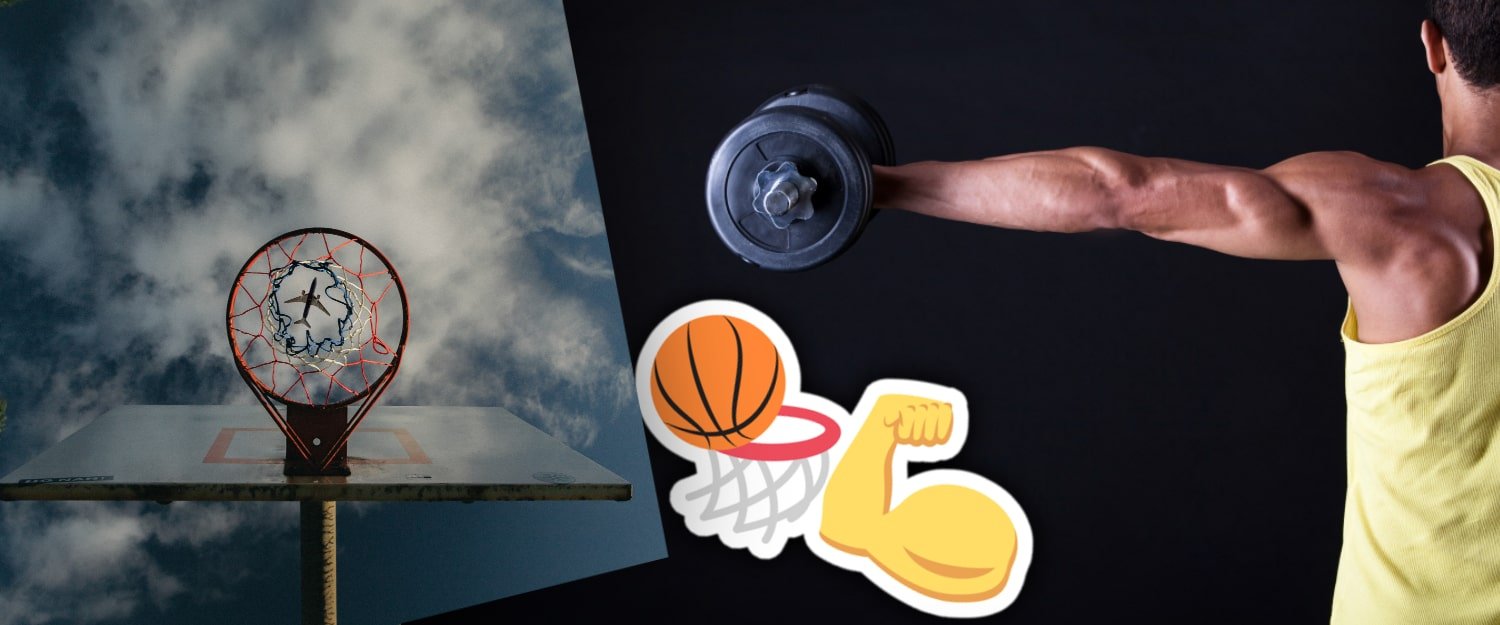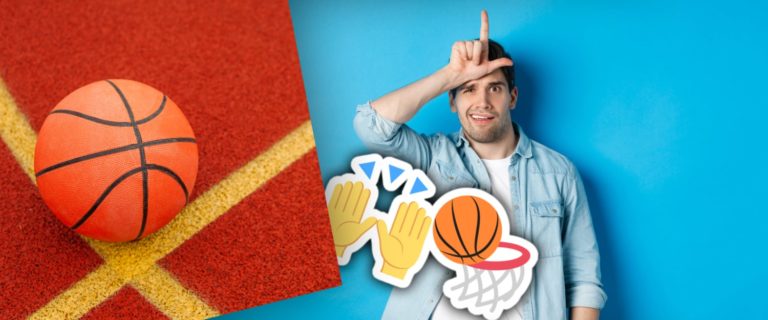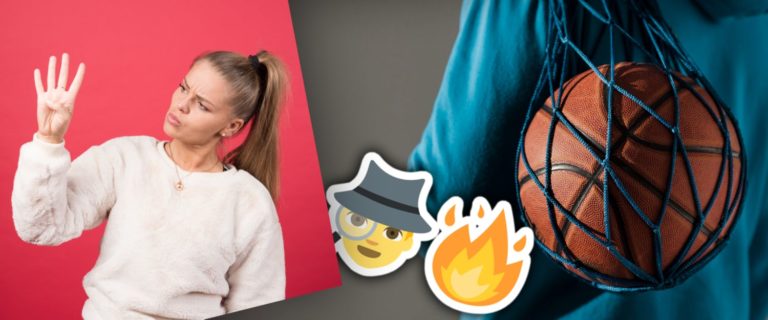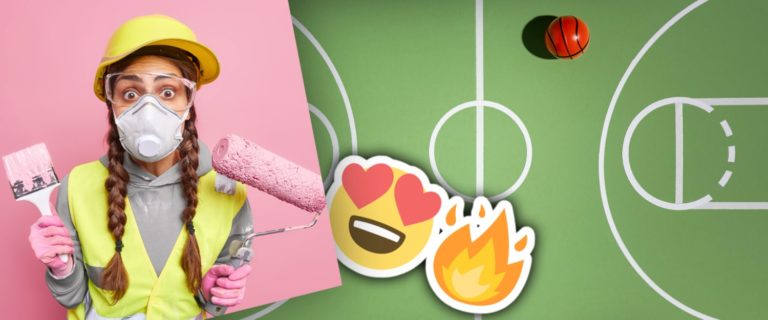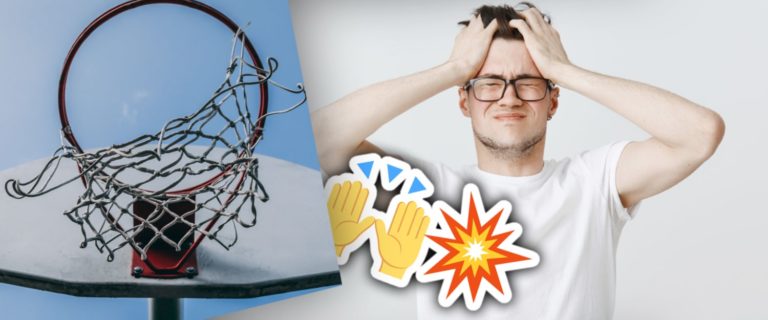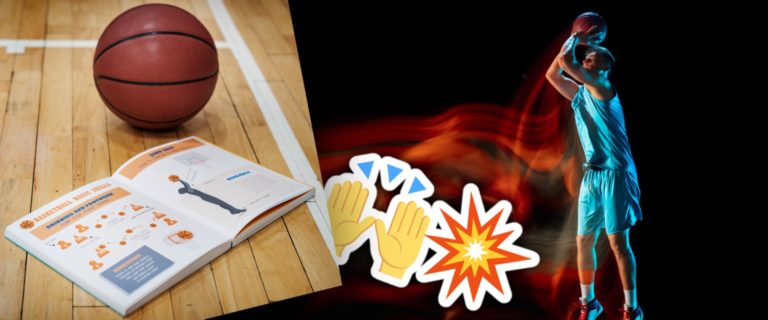How Basketball Players Have Big Shoulders? Tips
What causes basketball players to have broad shoulders? What is the significance of basketball players having larger-than-average shoulders? To answer these questions, we must first define shoulder muscles.
The four main shoulder muscles are the trapezius, infraspinatus, and supraspinatus. Our ability to lift and move our arms about our bodies is aided by these muscles. Basketball players’ shoulders become wider as their arms get stronger over time by lifting them to shoot a ball or rebound it from the other side of the court.
How Do NBA Players Get Big Shoulders?
The shoulder muscles are used to shoot a ball from a long distance in basketball. Regularly doing this strengthens these muscles, resulting in bigger shoulders over time.
The players also engage in numerous other activities that aid in the development of their physique, such as practicing day and night for years on end, adhering to diet plans, and so on, resulting in big muscular bodies.
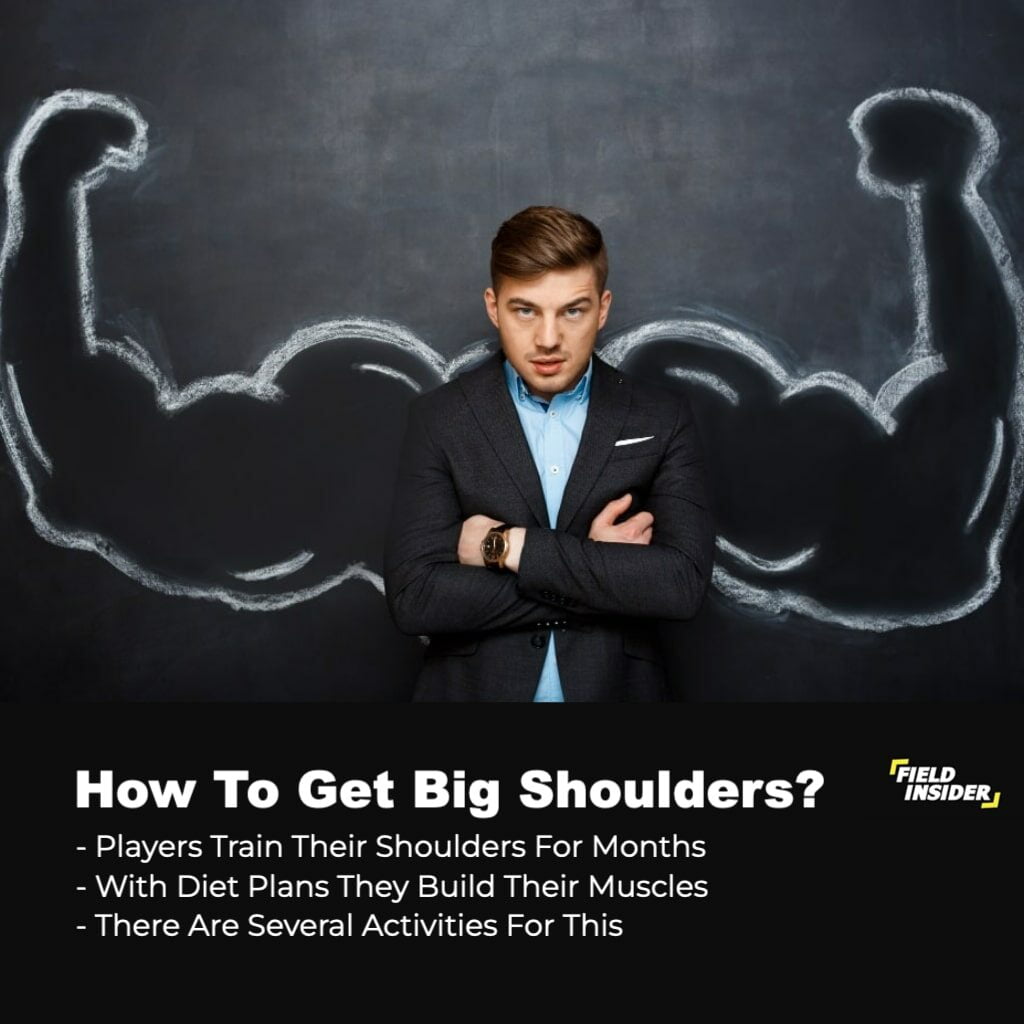
The Shoulder Muscles
Deltoids
The deltoids are located at the front of your shoulder and assist in lifting and rotating your arms. They are divided into three different sections: anterior, lateral, and posterior.
Trapezius
The trapezius is a flat, triangular muscle located behind your shoulder. It aids in lifting, rotating, and stabilizing the arms.
Infraspinatus
The infraspinatus muscle is located beneath the trapezius and aids basketball players in rotating their arms.
Supraspinatus
The supraspinatus is located above the infraspinatus and, along with the deltoids, assists basketball players in lifting their arms to shoot a ball or pass it to teammates after rebounding from the opposing side of the court.
As a result, these two muscles, along with other shoulder muscles, are responsible for basketball players’ broad shoulders.
Now that we’ve learned about the muscles involved in basketball players having big shoulders let’s look at some tips on how to get one.
Exercises for Your Shoulders
People often wish they had a muscular upper body like a basketball player’s but find it difficult to achieve such a weighty look due to a lack of time in the schedule as well as fitness motivation at times. But if you want bigger shoulders as well, here are some exercises to try:
Shoulder Press
The shoulder press is one of the best exercises for basketball players’ shoulders. This exercise works to strengthen all four muscles in the shoulder region. You can accomplish this by performing the presses with a weight bench or even dumbbells.
Lateral Raises
The lateral raise is another excellent exercise for basketball players’ shoulders. This involves lifting weights sideways and specifically targets your deltoids. This can be done with dumbbells or a barbell. To begin, raise the weights from your knees and gradually raise them to shoulder level before lowering them back down.
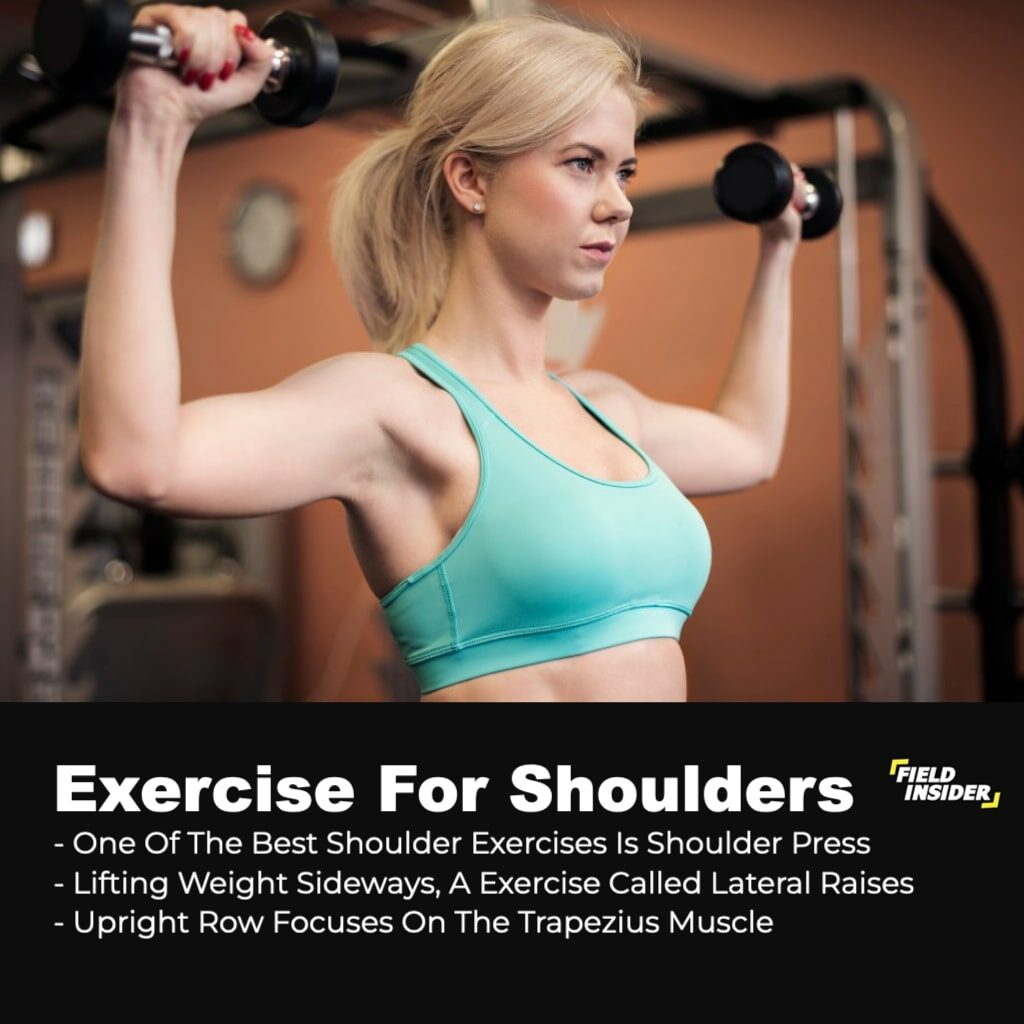
Upright Row
An upright row is a good third exercise to do because it works your trapezius muscles as well. This is a perfect exercise for developing a basketball player’s shoulders. You can also use dumbbells or barbells for this one. Begin with a light weight and gradually increase the number of repetitions as your strength improves.
Shoulder Shrugs
Shoulder shrugs are also useful for working on the trapezius muscle. Lift your shoulders as high as you can and then return to the starting position for this exercise. This exercise can be performed with either a weight bench or dumbbells.
Rear Delt Flyes
Finally, rear delt flyes are excellent for strengthening the back deltoid muscles. You must first set up an incline bench and then lie down on it while holding two dumbbells. Slowly raise the weights to your chest and hold for a second before returning to the starting position.
Overview of Exercises
There are numerous other basketball workout exercises that can help strengthen the deltoids, trapezius, infraspinatus, and supraspinatus.
All of these exercises should be performed with caution, as poor form can result in injury. So, before beginning any new workout, it’s always a good idea to seek professional advice.

Tips On Getting The Basketball Players’ Shoulders
Do weight training exercises that focus on these muscle groups, such as lateral raises, front raises, bent-over rows, etc. This will help you build bigger shoulders over time.
Perform weight-training exercises that target these muscle groups, such as lateral raises, front raises, bent-over rows, and so on. This will aid in the development of larger shoulders over time.
- At the gym, use machines like the seated press and military press to isolate these muscles and achieve better results.
- If you haven’t already, start playing basketball and practice regularly.
- Every day, shoot basketball balls from a long distance to strengthen your deltoids.
- Maintain a healthy diet by eating foods high in protein and healthy fats, such as eggs, fish, and nuts.
- Basketball workouts with a partner can help you strengthen your trapezius muscles and gain an advantage in basketball games.
- Stretch your shoulders to improve your flexibility for better results in every workout session.
- Shoot basketballs from various angles, including underhand shots, to help strengthen the infraspinatus muscle in the shoulder area, as well as the supraspinatus muscle above it, as well as the deltoids and trapezius muscles.
These are some simple tips for making basketball players’ large shoulders appear even larger than they are! These steps will not only help you achieve those broad muscular shoulders, but they will also help you improve your performance.
Quick Summary on growing your shoulders like nba players
Growing your shoulder muscles requires a combination of consistent strength training, proper nutrition, and recovery. Here is a detailed study on how to grow your shoulder muscles:
- Perform Compound Exercises: Compound exercises are multi-joint movements that work several muscle groups at once. These exercises are excellent for building strength and mass in your shoulder muscles. Examples of compound exercises for shoulders include the overhead press, upright rows, and lateral raises.
- Use Progressive Overload: Progressive overload is the gradual increase of weight, reps, or sets over time. This technique is essential for muscle growth, as it stimulates muscle hypertrophy. To use progressive overload for shoulder growth, gradually increase the weight you use for each exercise, aim to perform more reps or sets, or decrease the rest time between sets.
- Train the Three Heads of the Shoulder: The shoulder is made up of three different heads: the anterior (front), medial (middle), and posterior (rear). To develop balanced shoulder muscles, it is important to target all three heads with different exercises. For example, the overhead press targets the anterior and medial heads, while the rear delt fly targets the posterior head.
- Vary Your Rep Ranges: Varying your rep ranges can help stimulate muscle growth in different ways. Aim to include a mix of low (1-5), moderate (6-12), and high (13-20) rep ranges in your training program. This can help target different muscle fibers and stimulate hypertrophy.
- Focus on Time Under Tension: Time under tension is the amount of time your muscles are under load during an exercise. Aim to perform each repetition slowly and with control, focusing on maintaining tension in your shoulder muscles throughout the entire range of motion. This can help increase muscle activation and stimulate hypertrophy.
- Incorporate Isolation Exercises: Isolation exercises target a specific muscle group and can help develop muscle definition and symmetry. Examples of isolation exercises for shoulders include front raises, lateral raises, and reverse flyes.
- Eat a Balanced Diet: Proper nutrition is essential for muscle growth. Aim to eat a balanced diet that includes a mix of lean proteins, complex carbohydrates, and healthy fats. Adequate protein intake is especially important for muscle growth, aim for at least 1 gram of protein per pound of body weight.
- Get Enough Rest and Recovery: Rest and recovery are essential for muscle growth. Aim to get at least 7-8 hours of sleep per night and incorporate rest days into your training program. This will help your muscles recover and grow stronger.
In conclusion, growing your shoulder muscles requires consistent strength training, progressive overload, targeting all three heads of the shoulder, varying your rep ranges, focusing on time under tension, incorporating isolation exercises, eating a balanced diet, and getting enough rest and recovery. By following these tips, you can effectively grow your shoulder muscles and achieve your fitness goals.
Regenerate response
Biggest and Broadest Shoulders in the NBA
Dwight Howard is widely regarded as the NBA basketball player with the largest shoulders. This is due to his unwavering commitment to weight training and basketball practice. The former three-time Defensive Player of the Year’s shoulders are 36 inches wide.
He more recently closely missed out on the best 75 basketball players of the NBA list.
His bodybuilding exercises involve a lot of focus on trapezius muscle work, as well as squats, bench presses, as well as other workouts like dips and pull-ups. This allows him to stay in shape while playing strenuous basketball games over the course of an 82-game season. No wonder they call him “The Greek Freak.”
Conclusion
To summarize, basketball players have large shoulders as a result of the repetitive use of their shoulder muscles when shooting or rebounding balls. You, too, can achieve this physique by incorporating some simple exercises into your daily routine. Get those broad shoulders right now!
We hope you enjoyed reading about basketball players’ broad shoulders. Check back soon for more exciting posts on the subject of basketball!


